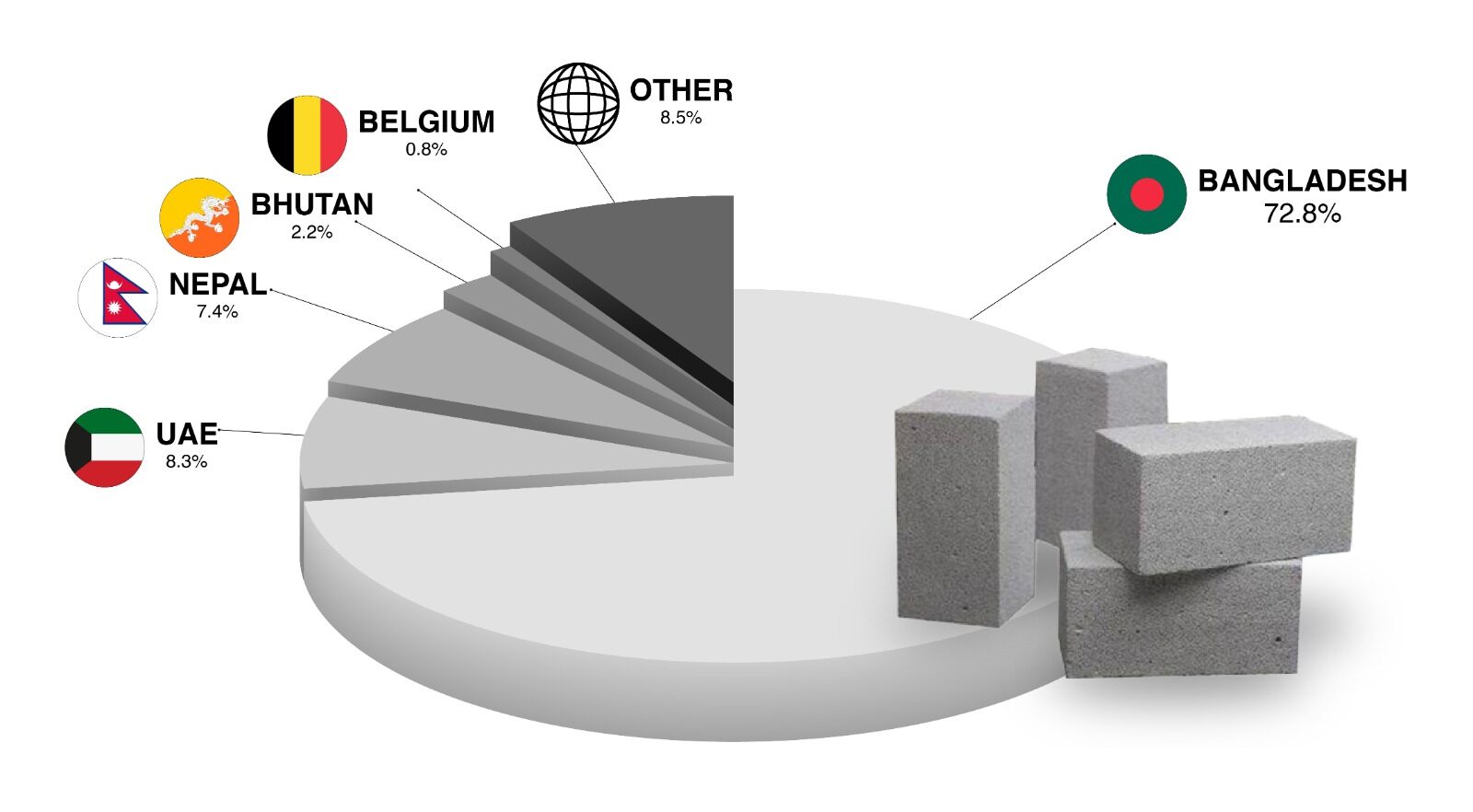Fly Ash Revolution: Transforming Waste into Sustainable Construction Solutions

The above chart demonstrates exports of fly ash from India in 2022, offering a concise breakdown of significant regions globally.
This blog post has been authored by Manasa Katari, International Business Analyst at Arthashastra Intelligence
In the commercial and industrial sectors, fly ash has a wide variety of applications and uses, though it is primarily known for improving the durability and workability of concrete mixes. Fly ash is also a filler in paints, adhesives, metal and plastic composites. It’s commonly used as structural fill for road construction and fly ash can be used to make bricks, ceramic tiles, plaster, Portland cement, and ready-mix cement. Fly ash isn’t a product that the average DIYer would find on the shelves at a local home improvement store. This substance is recognized as a hazardous byproduct created by burning coal and it is regulated by the EPA, so only companies with the appropriate training and permissions may purchase fly ash or coal ash to create fly ash products. Generally, fly ash cement is more affordable to produce than traditional cement, making it an attractive option for concrete manufacturers.
Bangladesh dominates the export share with 72.79%, followed by significant contributions from Saudi Arabia (8.26%) and Nepal (7.41%). Bhutan and Belgium have smaller shares, while other countries collectively contribute 8.46%. Bangladesh’s strong performance suggests a key player in the export market, potentially impacting regional trade dynamics.
FA is apowdery solid that is constituted mostly of unburned carbon (UC), metal oxides (Si, Fe, Ca, and Al), and other inorganic substances. UC is an inexpensive source of activated carbon that plays an important role in FA adsorption capacity. Due to the broad variability in its composition, FA characterization is challenging. Accordingly, FA is categorized into class F, and class C according to the maximum and minimum % of SiO2, Al2O3, Fe2O3, and SO3. X-ray diffraction, fluorescence, and scanning microscopy with an energy dispersive spectroscopy are the common techniques employed to characterize FA.
Fly ash is a by-product with roots in traditional manufacturing, is gaining prominence for its sustainability in the construction industry. Its use in products like bricks reduces cement requirements, cutting overall costs. Acting as an aggregate in concrete, fly ash reduces energy consumption during mixing and curing, minimizing environmental impact. Moreover, it enhances concrete strength, leading to more durable structures that require less maintenance. This eco-friendly approach not only conserves materials and energy but also addresses water scarcity concerns by potentially reducing water usage in construction.
References:
https://www.thespruce.com/fly-ash-applications-844761
https://www.sciencedirect.com/topics/earth-and-planetary-sciences/fly-ash
Ministry of Commerce
